The American Monthly Review of Reviews
[Pages 171-179]
ARCTIC EXPLORATION AND THE QUEST OF THE NORTH POLE.
BY WALTER WELLMAN.
[page 171]
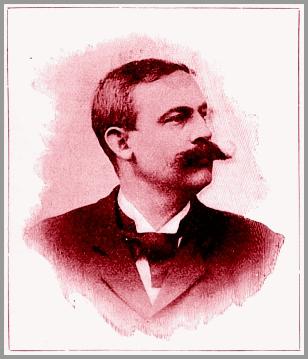
Mr. Walter Wellman
I.-EXPEDITIONS THAT WILL START THIS YEAR.
NO fewer than five arctic efforts are planned for the near future. Of these, two have as their objective point the north pole. In July, this year, Lieutenant Peary will steam up the west coast of Greenland in the Windward, taking on board at Cape York the Esquimaux men, women, children, and dogs whose services he engaged last summer. He will then push as far north as possible in his steamer. If the condition of the ice is favorable to navigation he hopes to get the ship as far as Petermann Fiord, latitude 81, or possibly to Newman Bay, latitude 82. At the ship's farthest north he will establish a station and his Esquimaux colony. As soon as possible he will throw out an advance post at or near Cape York, and when that is done will in the spring or favorable season for arctic sledging attempt a dash to the pole with dog sledges. The distance from Cape Washington to the pole is about 450 statute miles. Lieutenant Peary proposes to remain in north Greenland as long as may be necessary to achieve his purpose, using the Esquimaux colony as a base of operations. He has taken leave of absence for five years, but hopes to be back in much less time. His plan involves not only an effort to reach the pole, but incidental exploration of unknown lands at the north of Greenland, with scientific work of the usual character. He will be accompanied by but one white man, a physician.
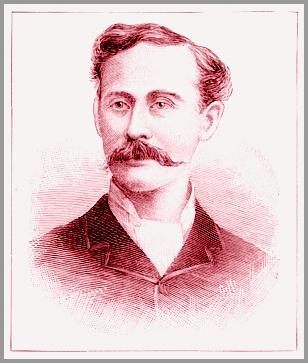
Lieut. Robert E. Peary
The Wellman plan is quite similar to that of Lieutenant Peary, except that it uses Franz Josef Land as abase of operations and employs Norwegian seal and walrus hunters instead of Esquimaux. July 1 the arctic steamer Laura, which has been secured for the expedition, will leave Tromsoe, and after taking on board at Archangel, in the White Sea, a large pack of the best Siberian draft dogs, will steam to Cape Flora, where she will probably arrive between August 1 and 15. Establishing there a supply station, with scientific investigators left in charge, the geographical party of six men will at once push northward, hoping to winter at or about Cape Fligely, which Payer reached in 1874. The following spring a dash will be made for the pole.
From Fligely to the pole the distance is 550 [page 172] statute miles. While the aim of this expedition is to reach the pole, if possible, in geographic work it hopes to determine the area and characteristics of the now unknown northern parts of Franz Josef Land, and in the scientific field to make valuable observations, particularly in gravity and magnetism, in which it will have the cooperation of well-known scientists and an equipment of the latest instruments.
Capt. Otto Sverdrup, who was with Nansen, will take the Fram this summer and go up Davis Strait and Smith Sound, having on board a party of European scientists who wish to make observations along the coasts of Greenland and Grinnell Land. The Fram has lately been fitted with a large cabin for the comfort of this party. No special effort is to be made to reach a high northing.
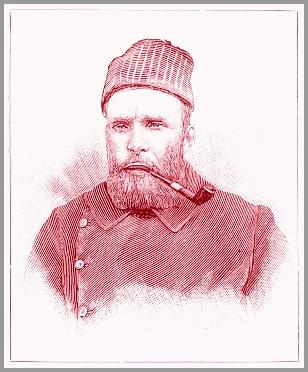
Capt. Otto Sverdrup
Frederick Jackson, who last autumn returned from Franz Josef Land, plans an expedition on the American side, going through Jones Sound and seeking to open up the unexplored lands which it is believed exist to the west and north.
The following interesting details have within a few days appeared in the press concerning a Swedish expedition that will do scientific work in arctic regions this summer : It will be under the leadership of Dr. A. G. Nathorst, who accompanied Nordenskjold in his Greenland expedition of 1883. Its main object is to examine the eastern side of Spitzbergen, Wiche's Land, and New Island ; in short, the region between Spitzbergen and Franz Josef Land. But as this area will probably not be accessible in the beginning of next summer, Dr. Nathorst intends to carry on investigations in Western Spitzbergen, Northeast Land, Bear Island, etc. He has bought the Antarctic, which in 1895 carried the whaling expedition to the south polar sea and is now being overhauled. The captain will be Emil Nilsson, who has been several times to the Yenisei, and who commanded the Sofia during Nordenskjold's Greenland expedition in 1883. Dr. Nathorst himself will have special charge of the geological work. The zoologist will be Mr. G. Kolthoff, of Upsala, curator of the fine biological museum at Stockholm. He also was in the 1883 expedition, and has made ornithological expeditions to Iceland and the Faros. Dr. Axel Ohlen, of Lund, who will assist him, has dredged off the east coast of Greenland, has visited Baffin's Bay and Melville Bay, and was in the recent Swedish expedition to Tierra del Fuego. Dr. Gruner Andersen will be the botanist. He has studied the arctic flora on the mountains of Sweden and Norway. The hydrographer will probably be Dr. Axel Humberg, also a well-known geologist; he also was in the 1883 expedition. The cartographical work will be under the charge of Lieut. Otto Kjellstrom. Special attention will be given to glaciers wherever found, and the surgeon, Dr. E. T. Levin, will investigate the occurrence of bacteria in the arctic regions. It will be seen that the expedition will be completely equipped in all departments of science.
II.-SOME IMPORTANT EXPEDITIONS SINCE 1870.
The last quarter of the nineteenth century has witnessed remarkable activity in polar exploration. In 1870 the United States Government sent Charles F. Hall, a civilian, on an expedition in the Polaris, and in north Greenland waters he reached the highest north then attained by ship, latitude 82:11, a record which has since been broken only by Nares in the Alert, 82:24, and by Sverdrup in the Fram, latitude 85:58.
In 1873 'Weyprecht and Payer, Austrians, were fortunate enough to drift in their ice-beset ship, the Tegethoff, to the southern shores of a land which they not only discovered, but in part explored by means of sledge journeys, naming it Kaiser Franz Josef Land. In the spring of 1873 Payer reached 82:05, and there saw to the northward "high, mountainous land" which he estimated to extend beyond the 83d parallel.
The English were now stimulated to renewed efforts, and in 1875 the world beheld the novel spectacle of a great nation sending forth a magnificently equipped expedition with orders to go to the north pole. Captain Nares was its leader, and he took two ships, the Alert and the Discovery, to north Greenland. The expedition cost $750,000, and although it did not bring back the pole as a prize, it did succeed in adding forty miles to the record of northerly progress.
[page 173] In 1879 the New York Herald dispatched Commander DeLong, of the navy, on a quest for the pole in the Jeannette. The ship was caught in the ice north of Siberia and drifted a long distance to the westward, finally sinking in latitude 77:15. The drift of the Jeannette, together with that of relics from her found two years later on the coast of southern Greenland, gave Nansen his idea for the drifting expedition in the Fram which resulted in such a great success. The thirty-three men of the Jeannette crew attempted the Lena delta. Twenty perished, only those piloted by the gallant Melville being saved, with two others.

Mrs. Peary in her arctic costume
In 1881 the United States Government sent out an expedition under Lieut. A. W. Greely, of the army, to establish one of the international polar stations. In addition to geographic and scientific work of the greatest value, performed under the direction of the indefatigable leader, Lieutenant Lockwood and Sergeant Brainard, by means of a sledge expedition along the coast of north Greenland, established a new record in the approach to the pole. Twenty-five out of thirty-two men of this expedition perished at Cape Sabine, through no fault of their commander, but on account of failures and official inefficiency which tarnished the arctic record of this country.
These two disasters checked for a time the enthusiasm for arctic exploration. In 1888 Fridtjof Nansen effected the first crossing of Greenland, justly regarded as a brilliant feat. But it was soon afterward eclipsed by an American, Lieut. Robert E. Peary, civil engineer in the navy, who in 1892, accompanied by Astrup, a Norwegian, crossed Greenland a thousand miles north of the route of Nansen, traveling with dog teams and sledges. In 1894 he met with failure in an effort to cross again, but in 1895 succeeded in once more reaching Independence Bay, without being able, however, to explore the northern termination of Greenland, as he had hoped.
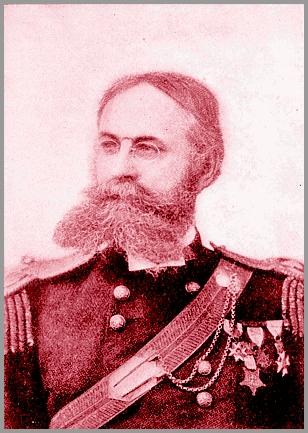
Gen. A. W. Greely
In 1894 two expeditions set out in the Old World, both with the pole as their objective point. Neither succeeded. One was that of the writer, of which General Greely says in his "Handbook of Arctic Discoveries:" "Walter Wellman, an American, endeavored to reach the pole by sledge and boat, using a ship at Spitzbergen as his base. Most improved scientific devices were employed to reduce weights and secure success, but unfortunately the Ragnvald Jarl was crushed by ice-floes at Walden Island. Although the ice was exceedingly rough, undeterred by adverse conditions Wellman pluckily continued north by sledge after the wreck, but was obliged to abandon the attempt at the 81st parallel."
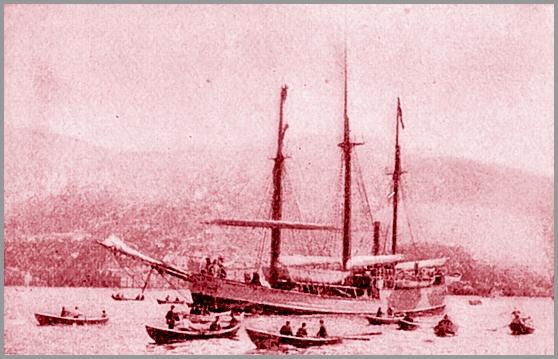
The "Fram" leaving Norway
The other expedition of that [page 174, see map below][175] year was led by Frederick Jackson, an Englishman, and was liberally fitted out by Alfred C. Harmsworth, a London newspaper owner. Jackson established headquarters at Cape Flora, Franz Josef Land, where he remained three years, exploring parts of that archipelago south of the 81st parallel. In June, 1896, he had a dramatic meeting with Nansen and Johansen, who had wintered eighty miles north. Nansen and Johansen returned to Norway in the Windward, which had visited the station every summer. This is the steamer which has been lent to Lieutenant Peary for his voyage this coming summer.
[page 174]
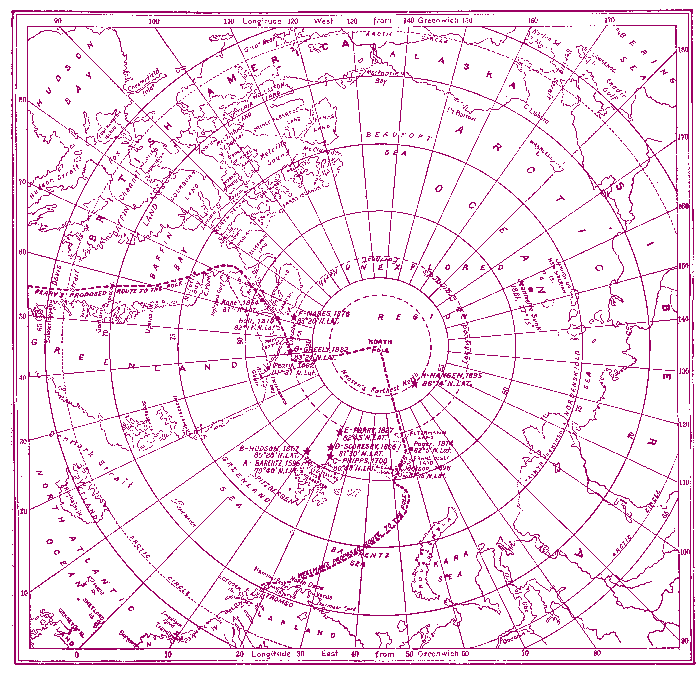
advance made toward the north pole during three centuries with proposed routes of peary and wellman
| Year | Explorer | Nationality | Lat. Reached | Statute Miles from pole |
Method |
|
1506.......... 1607.......... 1700.......... 1806.......... 1827.......... 1876.......... 1882.......... 1895.......... |
Barentz Hudson Phipps Scoresby Parry Nares* Greely † Nansen |
Dutch English English English English English American Norwegian |
79:40 80:23 80:48 81:30 82:45 83:20 83:24 86:14 |
713 654 635 587 500 460 455½ 260 |
Sailing ship Sailing ship Sailing ship Sailing ship Small boats, sledges Small boats, sledges Sledges Small boats, sledges |
———
* Although Captain Nares was leader of the expedition the sledge journey was made by Markham and Parr, officers.
† General Greely was the leader of the expedition, but the northern journey was made by Lockwood and Brainard, officers.
[page 175, continued] No expedition since that of Greely is worthy more than briefest mention in comparison with Nansen's brilliant achievement, the details of which are still fresh in the popular mind. Not only did Nansen's drift theory prove correct, but by leaving his ship in an effort to reach the pole by dog sledges he contributed one of the most fascinating chapters known to all arctic history. If Nansen and Johansen had not permitted their watches to run down, preventing them ascertaining their longitude, they would have been able to come down upon the head of Franz Josef Land, clearing up the mystery as to the area and trend of the northern parts of that archipelago, seen by Payer twenty years before, but never touched by the foot of man. As it was, Nansen's expedition discovered no new lands, but its contributions to knowledge are nevertheless of first importance.
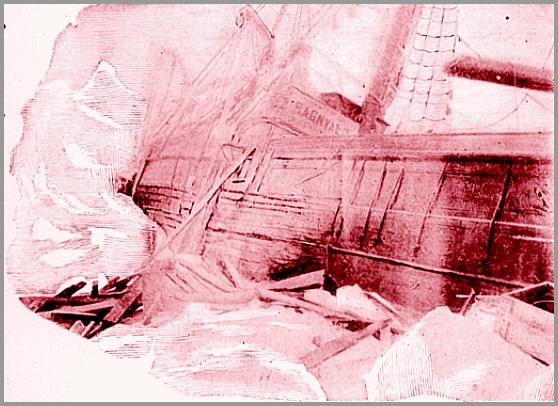
Wellman's 'Ragnvald Jarl' crushed by ice
July 11 last S. A. Andree, a Swede, accompanied by two of his countrymen, set out from Danes' Island, Spitzbergen, for the north pole in a large balloon. The only information concerning their journey that has come to hand was found in a pigeon-message written by Andree himself two days after the ascension. In this dispatch he said they were then, noon, July 13, in latitude 82:2 and longitude 15:5 east, that all were well on board, and that they were making "good progress to the east, ten degrees southerly." This message indicates that Andree's plan of sailing to the pole or its vicinity by balloon resulted in failure. In about one-fifth or one-sixth the time his air-ship could remain afloat he had made but small progress northward, and was then being driven south of east. If Andree and his comrades are still alive the chances are they will be found next summer at Cape Flora, Franz Josef Land, where Jackson left for them a supply of food.

Dr. Fridtjof Nansen
[page 176] III.-HOW IS THE POLE TO BE ATTAINED?.
And how can the pole be reached ? By a sledging expedition over the ice which covers the polar sea, made from a base station upon the land as far north as we can establish it. It is only by sledging that any one now proposes to reach the pole. The open polar sea and the possibility of sailing to the top of the earth in a ship are dreams of the past. Balloons are extra-hazardous, being mere toys for the winds and offering no opportunities for scientific observation. Drifting with the current which flows lazily through the Arctic Sea is a slower but more certain method, though Dr. Nansen's experience indicates that the current falls several degrees short of the pole. Dr. Nansen left his ship and sought the pole by sledging over the ocean ice.
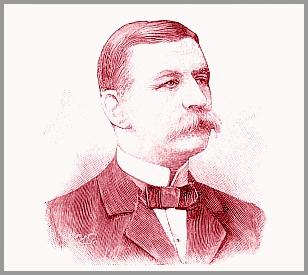
Mr. S. A. Andree
This base station should be established upon some land which extends far to the north, which is accessible by steamer in the summer season, and which contains animal life sufficient for support of the explorers in case of need. In the opinion of some arctic authorities Greenland offers greatest advantages as a gateway to the pole. There is every probability that it extends farther north than any other land of which we have knowledge. It is believed the mainland of Greenland has its northern termination between the 81st and 83d parallels, but outlying islands or other land masses are known to reach as far as 83:30, and they may extend much farther.
North Greenland's disadvantages as the site of a polar base station are: First, its doubtful accessibility by ship, navigation through the narrow, ice-gorged straits-Smith Sound and Kennedy and Robeson Channels-being exceedingly uncertain and hazardous. Second, the long sweep of the coast from southwest to northeast, involving 200 miles' travel eastward to make 100 miles northward-from Newman Bay, the highest point to which it is likely a ship could be steamed, to Cape Washington, the most northerly known point of land. Third, the improbability of finding enough game there upon which to support life, there being few seals in northern Greenland and consequently few ice bears, and the musk oxen having a wide range and therefore not to be depended upon.
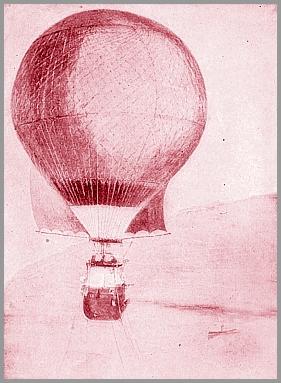
Andree's Balloon
Other arctic authorities believe advantage could be gained by establishing the polar base station on Franz Josef Land, which lies between the 80th and 84th parallels, its northern shores being as yet unexplored. The southern coast of this land can be reached every summer by an ice steamer from Norway. In the autumn following the arrival of the expedition winter headquarters should be established at Cape Fligely, latitude 82:05, where game in abundance could be had for men and dogs. By the time the light returns in the spring the expedition party will be found hardened through almost daily exercise and exposure. All details of the sledging equipment and methods will by this time have been thoroughly tested and mastered, and everything will be in readiness [page 177] for the dash for the pole which is to be started upon about the middle of February.
At latitude 82 degrees the sun reappears March 1. But during two or three weeks before this date the dawn is bright enough to travel by, and the northern journey should begin about February 15. The cold will then be great-from 20 degrees to 50 degrees Fahrenheit below zero -but it is cold that keeps the surface in best condition for sledging. Hardened men, properly clad, can endure any degree of cold as long as the wind does not blow. Fortunately the arctic spring has little wind, the storms coming, for the most part, later in the year. In the latter part of March and all of April the temperature will become more moderate and travel unaccompanied by any great hardship on account of the cold. May will be warmer still and really balmy for men accustomed to the lower temperatures of February and March. But by the first of June it will be too warm. The snow will then be softening and the ice breaking up more and more. The favorable season for arctic sledging is at an end.
The favorable season-the period in which most rapid progress may be made and for which the plan should be laid that all of it may be utilized and yet no superfluous pound be carried-is about one hundred days, or from February 15 to May 25. In this one hundred days' campaign the party should make its northerly advance and its return to land, though of course, if still out when June 1 comes, it will be able to proceed at a diminished rate of speed.
What is the length of this journey for which we must plan ? From Cape Fligely to the pole in a direct line is 475 geographical miles. If we say that, on account of deviation from a straight course made necessary by hummocks, leads, the drift, etc., the total distance to the pole and back is 1,050 geographical miles, we shall be within bounds.
The road to be traveled is the frozen surface of the polar sea. That the " pack " can be traversed at a satisfactory rate of speed, with proper equipment and in the favorable season, we know, because it has been done. As long as the temperature is low the pack remains quite closely knit. There are a few leads or channels between the floes, even in the coldest weather, but a greater number of them as the season advances and the cold is moderated. Crossing these channels is usually easy, either by boat or upon bridges of natural ice, but a few are troublesome on account of sludge upon their surface or young ice that is not quite strong enough to bear.
The surface of the frozen sea varies widely. Here are level fields over which the sledges will glide rapidly hour after hour, making journeys of from fifteen to twenty-five miles a day possible. Then will come fields of rubble and pressed-up blocks which give much trouble. Many pressure-ridges at the edges of the floes will be encountered, but these are as a rule not difficult to cross, as their sides are drifted over with snow and they are transformed from rough cliffs into hillocks varying in height from ten to twenty feet.These known conditions of season, distance, road, and difficulties show us that our organization and outfit must be a perfectly adaptable and perfectly balanced machine. All must be planned as carefully as the building of a locomotive or a steamship. There must be power enough, but no superfluous power to waste fuel. The parts must be strong enough to endure all ordinary and extraordinary strains, but not so heavy as to drag upon the power. There must be food enough to keep men and dogs going in full strength just the time needed for accomplishment of the task, within the favorable season, but not a pound beyond to be unnecessarily dragged the whole distance.
Such a perfectly balanced, skillfully equipped and organized expedition, comprising all the latest developments and appliances for rapid travel, has never yet been placed in the field. Indeed, it is only now, after the experiences of Lieutenant Peary, Dr. Nansen, and other recent arctic travelers, that such a thoroughly modern plan and equipment have become possible.
We now know that in traversing the polar pack we must have a boat with which to cross leads, that it must be a boat with peculiar powers of resistance to injury, that it must be at all times ready to go into the water so that time need not be wasted in long detours seeking crossings upon the ice, as was the case with Dr. Nansen throughout his journey, or till a week was spent in repairing the canvas kayaks in which the ice had made many holes.
We know that dogs are the cavalry horses of the arctics, and that we must have plenty of dog-power to drag all the loads over the good ice, in order to save the strength of the men for the rougher places; and plenty of man-power to get everything quickly over the rubble, ridges, and leads-the dogs resting at these bad spots and the men resting while the dogs do the work on the long reaches of level or undulating surface.
With a party of six hardy men, with fifty draft dogs from Siberia, with a rubber pneumatic boat which has no rigid surface to receive injurious blows in ice, with specially built sledges that are drawn each by one dog and that may capsize without injury or the need of righting, so that the dogs go along practically without [page 178] attention or driving, with light weights constantly becoming lighter, with man-power and dog-power enough to keep moving straight ahead all the time with all the loads without the need of "doubling up"-that is, to divide the load into two parts and thus go three times over the roadwith careful attention guided by experience to every minute detail of food and equipment, it is possible to travel an average of from thirteen to seventeen miles per day.
Notwithstanding their lack of power in proportion to their impedimenta, their loss of time in long detours seeking crossings of leads upon the ice because their kayaks were unfit to go into the water, their inability to travel more than six or seven hours per day because two men could not quickly attend to all the duties in camp, Dr. Nansen and Lieutenant Johansen made during the favorable season an average of about nine miles per day. Dr. Nansen says if he had had more dogs and men and a supply station on Franz Josef Land to fall back upon, he could have made the pole. He is also quite confident the pole can be attained in the way which is here proposed.
At an average progress of only twelve miles per day the pole could be reached and returned from in eighty-eight days. Ample time would remain for the party to make its way back to the station on the southern coast to meet the steamer sent out after it.
In this way, with a very small expenditure of money and with only a year and three months' absence from civilization, I believe the north pole can be attained without the loss of a single human life.
IV.-WHY DO MEN STRIVE TO REACH THE POLE?
What is the use of trying to reach the north pole ? What is to be gained for mankind ? What will you do with the pole when you get it
These are questions which every friend of arctic exploration is often called upon to answer. They are propounded in all seriousness and good faith, and deserve reply in kind
Many men who applaud a Lick or a Yerkes for their liberal endowment of great telescopes with which to discover new stars in the stellar universe have fallen into the habit of sneering at the men who propose to discover the north pole and thus add to our knowledge of our own world.
Men who rejoice whenever a new fact is learned concerning the heavenly bodies or the internal structure or history of our globe have little patience with those who venture into the unknown regions of the north with a view to learning what is there.
They forget, perhaps, that this earth was given man for his home, and that the desire to conquer and to know all of it is as instinctive as life itself.
The results of efforts to explore the great unknown area about the pole may be divided into two parts : One has to do with the extension of knowledge, with the ascertainment of those facts which build up and broaden and perfect the sciences ; the other caters to love of adventure, to admiration for conquest of difficulties, and certainly these are not the least praiseworthy traits of human nature.
To the man who asks, '' Can people live about the pole-what can be grown there ? " and who thus implies impatience with exploration which does not open up either mines or farms or some productive industry, there is no answer. The same man might ask, Of what use is a poem ? He must be permitted to go his way, along with the man who can see no value in dredging the depths of the sea, scaling the heights of mountains, or widening our knowledge of the stars, because in none of these places can wheat or corn be grown or precious metals be mined.
But to those who look upon the garnering of every new fact concerning our universe as a contribution to the sum of human knowledge, and therefore to human power and human happiness, the value of arctic exploration is obvious.
"Nowhere are more questions to be found for which to seek answers," wrote Prof. Georg Gerland, the physicist, '' than in the polar regions.
. . . Man's disposition to make all the earth his home and himself at home everywhere in it is only sharpened by the problems offered there, and the tendency to go becomes irresistible.
The explanation of the glaciation of the northern part of our temperate zone during the ice age, still unfound, is a matter of great importance, for the topography of the land at the present time was brought out and the organic life of the whole earth was modified by it; and it is the general opinion that the solution of the problem is to be found, if it is found, by a study of the polar regions.
" . . . Man could not refrain from inquiring into the nature and reason of these things if he would, and hence he is willingly or unwillingly led to the poles, where he is brought into the closest relations with them and where the explanation of them can be most hopefully sought."
As good an authority as Prof. Angelo Heilprin, of the Philadelphia Academy of Sciences, stoutly defends that species of exploration which has for its main object the discovery of the pole. "Arctic exploration for the attainment of scientific [page 179] knowledge pure and simple," he says, "is worthy all the effort that can be put to it; but none the less worthy is an exploration which has for its main object the resolution of a problem which has attracted man's attention for upward of three hundred years, and thus far baffled all his ingenuity and advances."
The question is asked : To what good ?
For those who identify the progress of civilization with a search after truth, it is hardly necessary to answer this question. It was fully answered a half century ago by that stern friend of knowledge, Sir John Barrow, when he wrote : " The north pole is the only thing in the world about which we know nothing, and that want of all knowledge ought to operate as a spur to adopt means of wiping away that stain of ignorance from this enlightened age."
The north pole is a great prize to win. It is worth winning, not alone because the world stands ready to applaud and reward him who first sets foot at that spot where there is no north and no other direction than south, but because in the doing of it real benefits are to be gained for the human race and the cause of knowledge.
The pioneer expedition to the heart of the inner polar region-to the pole itself or its vicinity-will not only bring back a story of adventure, of hardship, of achievement which will stir the blood of all who admire courage and physical prowess and triumph over the difficulties of nature, but it will return with valuable information concerning the magnetic and electrical forces of the earth, now so little understood, concerning meteorology and geology, the forms and extent of unknown lands, if any exist, the depth of the sea and the currents thereof, the organic life of our own and past ages, and the great problem of glaciation, which involves the history of the human race.
Simply to reach the pole for the sake of a sensational success would be a splendid play in that international game of daring and endurance which has been going on for three centuries. Having long ago set out to do this thing, nothing can be more certain than that man will go on till he has succeeded. As an athletic feat, as a triumph of preparation and combination, as a victory over the difficulties of road, distance, time, and climate, it would be at least as worthy admiration as the breaking of records upon the race-horse or bicycle track, as the winning of a baseball, football, or yachting trophy-feats to which the world properly gives its applause and its reward in rich measure. But even a mere effort to reach the pole has vastly more to commend it, since it is impossible for an expedition to approach the pole without exploring seas and lands now unknown, without gathering a multitude of facts for which every physical science awaits with eagerness.
The north pole can be and probably will be reached during the next few years. In arctic exploration as in everything else there is progress. It is only now that the combined experience of all who have ventured in this field teaches us precisely what the conditions are that must be coped with and precisely how they are to be overcome so that we are able to say we know how the pole can be attained.